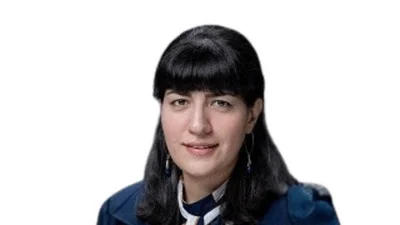Dr. Andrew Armacost, President | University of North Dakota
Dr. Andrew Armacost, President | University of North Dakota
The University of North Dakota's College of Education & Human Development (CEHD) has achieved a significant milestone by securing the 82nd position in the National Science Foundation’s Higher Education Research & Development (HERD) survey. Rob Stupnisky, CEHD Associate Dean of Research & Faculty Development, highlighted this achievement as an important indicator of the college's research productivity.
Stupnisky stated, “That’s what people in my line of work — I’ll call them university research administrators — consider one of the top metrics in terms of a college’s research productivity.” He added that this recognition reflects the hard work and dedication of faculty involved in grants and research.
The HERD survey collects data from around 500 universities each year, detailing how much they spend on external grant money. For fiscal year 2023, CEHD reported grant expenditures amounting to approximately $5.2 million, marking an increase from $3.3 million and a previous ranking at 101st place.
Reflecting on past achievements, Stupnisky noted that three years ago, CEHD was ranked 122nd. "But when I saw our grants were on the rise, I thought, ‘Wow! Wouldn’t it be amazing if we could become a Top 100 research college of education,’” he said.
The broader University of North Dakota also improved its overall ranking from 150th in 2022 to 144th in 2023. Stupnisky emphasized that external grants not only enhance academic pursuits but also benefit surrounding communities by supporting public health goals and training professionals like teachers and counselors.
“Grants are mutually beneficial for students and faculty,” he explained. “They provide far-reaching and broader economic development beyond our immediate campus.”
He further mentioned that successful grant administration increases future funding opportunities: “When you can show you’re capable of carrying out these large grant projects, the likelihood of getting funded in the future increases.”
CEHD has seen substantial growth in its grant expenditures—50% over last year and a staggering 327% over five years—with projections suggesting continued upward trends. Stupnisky credits former Dean Cindy Juntunen and former Associate Dean Rachel Navarro for initiating cultural shifts emphasizing external grants' value.
“They began to change the whole culture by emphasizing the infinite value of these external grants,” said Stupnisky. The college established initiatives encouraging active engagement in grant writing and research activities.
These efforts included hiring dedicated staff such as Robert Monette, Gabriel Salander, and Rosemary Schultz to assist with grant processes; providing internal mini-grants; offering funds for summer writing; organizing workshops; and prioritizing hiring faculty with research expertise.
Current Dean Shelbie Witte continues to support these initiatives along with other research-focused programs detailed by Stupnisky in his December blog post titled “CEHD Research in Press.” The blog highlights impressive growth figures: CEHD faculty submitted 49 external proposals during FY24 compared to just 13 five years prior—a total budgeted proposal amount increasing from $2.78 million to $45.4 million over five years.



 Alerts Sign-up
Alerts Sign-up